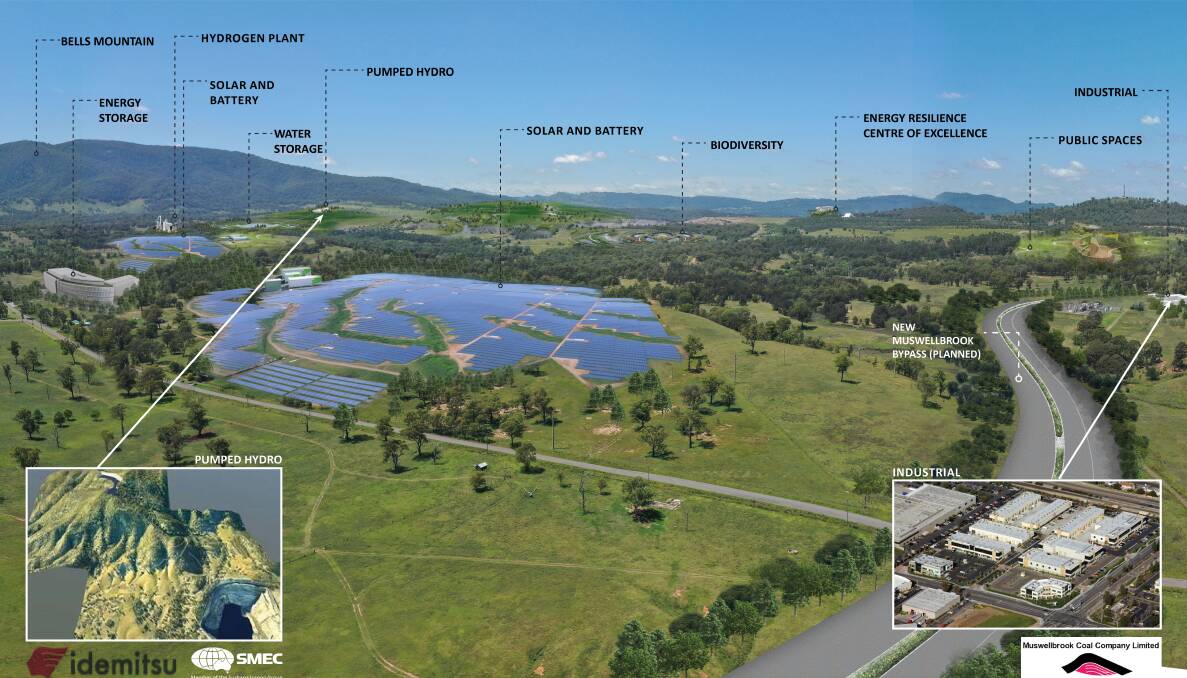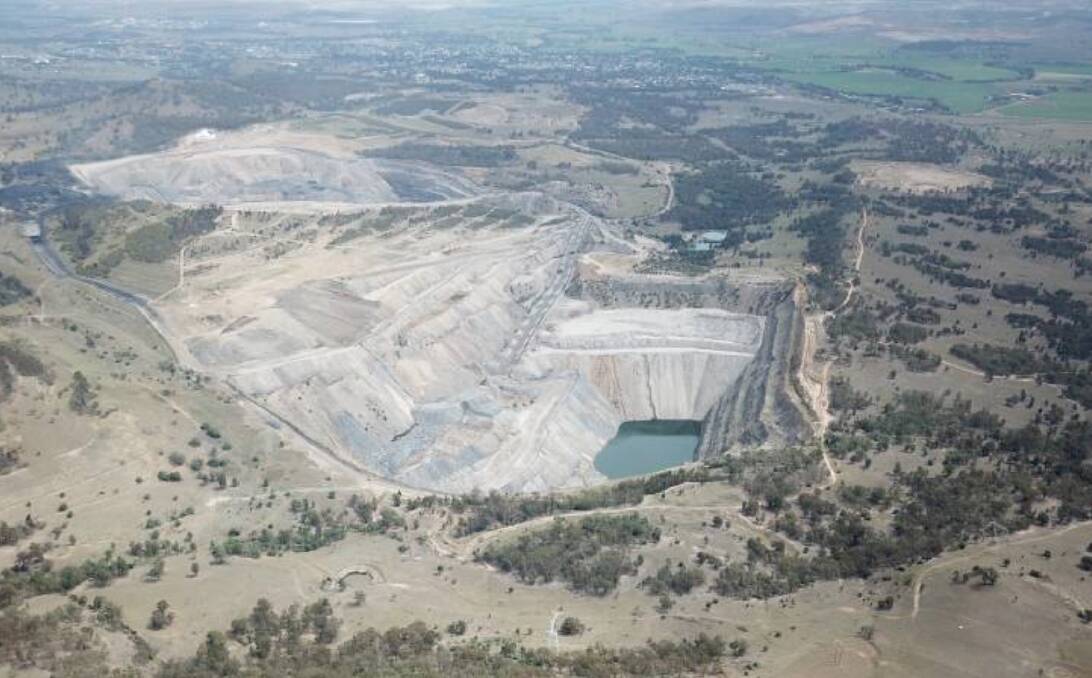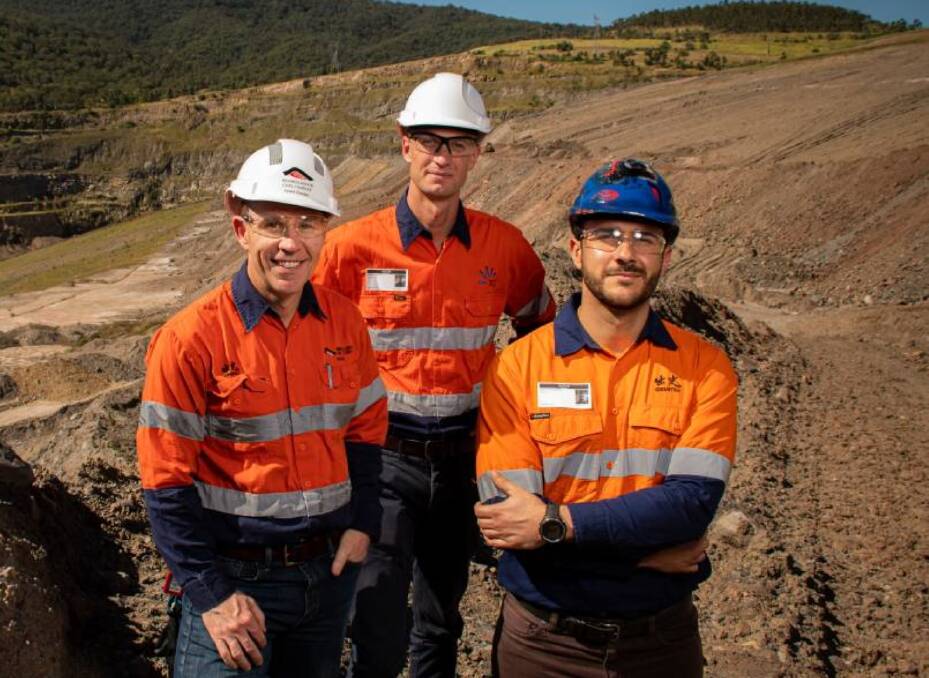For more than a century, Muswellbrook Coal Mine has been the source of millions of tonnes of fuel for the world's coal-fired power stations.
Subscribe now for unlimited access.
or signup to continue reading
That legacy will end next year when the mine comes to the end of its working life, resulting in the loss of 150 jobs in the Upper Hunter.
But while it is the end of an era, it also represents the start of a new life cycle for the site as well as economic opportunities.

The mine's owner, Japanese energy producer Idemitsu, has prepared a masterplan for the area with a view to transforming the old pit into an energy training and industry precinct.
The project, which will incorporate green hydrogen, solar and pumped hydrogen, is a key part of the company's efforts to reduce its carbon emissions by four megatonnes and generate four gigawatts of renewable energy by 2030.
The company is aiming to be carbon neutral by 2050. Idemitsu Australia chief executive Steve Kovac said the project represented a "once in a generation opportunity" to stimulate economic growth and create jobs following the mine's closure.
"The Muswellbrook Energy, Training and Industry Precinct is an important development project for the region and that will have significant social and economic benefits," he said.
"We believe in the bright future of renewable energy, and we have already established Idemitsu's renewable energy expertise in Australia.
"At the same time, we understand the importance of coal and hydrocarbons to meet the world's current energy needs.

"We see a continued future for coal and are committed to our role in producing these commodities for export which is critically important for the local communities that we support.
"We also have a long-standing commitment to the community of Muswellbrook. We want to do what we can to turn an otherwise empty pit into an exciting new project that provides jobs and further diversifies our portfolio."
The most advanced component of the project, The Bells Mountain pumped hydro scheme, will see the mining void transformed into a 250 megawatt generator by 2027.
The mining void can hold six gigalitres of water (by comparison Grahamstown Dam holds 182 gigalitres).
Water would be pumped 2000 metres to the top of Bells Mountain where it would be stored in a 1.9 gigalitre reservoir that would be created on the top of the mountain.
It would flow using gravity through pipes to drive a turbine at the base of the mountain. The project would generate 250 megawatts with eight hours of storage capacity (for a total of 2000MWh of stored energy) to feed electricity into existing high voltage power lines nearby.
Idemitsu, which is working in partnership with AGL, recently completed a two-year preliminary feasibility study for the project. Following the promising early results, the project is now entering its final feasibility stage.
Work is also underway to assess the feasibility of a 150-200 megawatt solar photovoltaic array and associated battery project.
The third element is a green hydrogen production and refuelling facility, which Idemitsu is developing with advisory firm Energy Estate.

The hydrogen facility is one of several that make up the Hunter Hydrogen Network (H2N) - a large-scale hydrogen production, transportation and export project that is seeking to kick-start the development of a hydrogen economy in the Hunter Valley.
Other supporters and partners include pipeline operator APA Group, commodities trader Trafigura and large-scale renewable energy developers RES Australia and WalchaEnergy.
A proposed Training and Industrial Precinct will further add to the Muswellbrook precinct's potential to create new employment and economic opportunities in the region.
Mr Kovac said Idemitsu was also investigating further renewable energy development and export opportunities through its subsidiary Idemitsu Renewable Developments Australia (IRDA).
"Idemitsu Australia has established IRDA to leverage our global expertise to ensure we can continue to contribute to regional communities like Muswellbrook where mining commenced some 113 years ago," he said.
"Innovative rehabilitation solutions such as the reuse of mine voids as proposed with the Bells Mountain pumped hydro project ensure that sites like Muswellbrook can continue to generate investment and long-term employment," he said.


